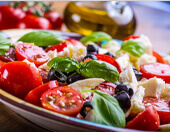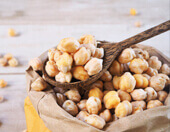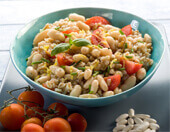13 Scrumptious Snacks to Eat While on the Mediterranean Diet
In the years following World War II, scientist Ancel Keys conducted his Seven Countries Study, which compared the health of people in the United States to six other countries across the globe (Palmer, 2013). Keys found that people living on the Mediterranean island of Crete had significantly lower risk for cardiovascular disease.
Examining the dietary habits of people living on Crete led Keys to promote the so-called “Mediterranean diet,” which has since been touted as a healthy eating plan for people of all ages. The Mediterranean diet emphasizes fruits, vegetables, whole grains, fish, legumes, nuts, and seeds.
And, in practice, following a Mediterranean diet plan is associated with lower risk of hypertension, cardiovascular disease, type 2 diabetes, high cholesterol, atherosclerosis, cancer, and neurodegenerative diseases such as Alzheimer’s disease or Parkinson’s disease (de Lorgeril & Salen, 2008; Benson, Pereira, & Boucher, 2011; Sofi, Cesari, Abbate, Gensini, & Casini, 2008).
But as with most diet plans, it is important to regulate not just the food consumed at mealtime, but also the foods eaten as snacks. The Mediterranean diet does not prescribe set meal plans, so when it comes to snacking while following the Mediterranean diet, there are no set rules.
In general, it is best to snack only when your body tells you it is hungry. For many people, this means eating a small amount every three to four hours (Real Simple, 2015). This typically translates to a midmorning snack as well as a midafternoon snack. Depending on when you eat dinner, you may also want to eat an additional snack several hours after you eat.
Healthy Snacks for the Mediterranean Diet
There are many snacks that fit within the Mediterranean diet plan, meaning that you can switch up your snacking routine from day to day. In general, a healthy snack should be around 150 to 200 calories (Everyday Health, 2014).
The purpose of a snack is to keep your blood sugar levels stable and to fend off major food cravings. Thus, your snack should contain some carbohydrates -- preferably from whole-grain sources -- as well as protein to promote satiety. Consider some of the following foods to enjoy when the urge to snack strikes.
Kalamata Olives
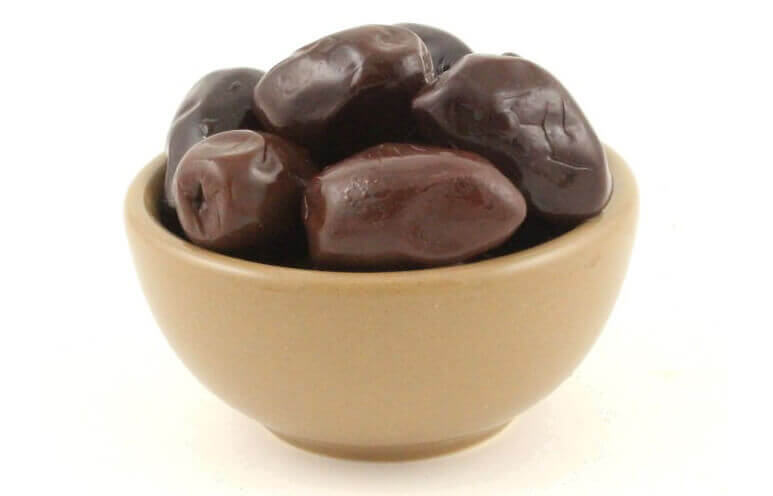
Olives are a simple snack that is perfect when you are in a rush. The briney flavor of these kalamata olives plays well against their natural oils. Plus, olives are rich in antioxidants such as tyrosol, hydroxytyrosol, and oleic acid. Crumbling a bit of feta cheese over the olives is a great way to enjoy this snack.
Pita and Hummus
Hummus, made from chickpeas and tahini (sesame paste), is a classic Mediterranean snack food. Make your own hummus at home, or buy an authentic hummus with as few preservatives as possible. Spread a few tablespoons of hummus spread on a piece of whole-wheat pita bread for a satisfying snack.
Detox Vegan Smoothie
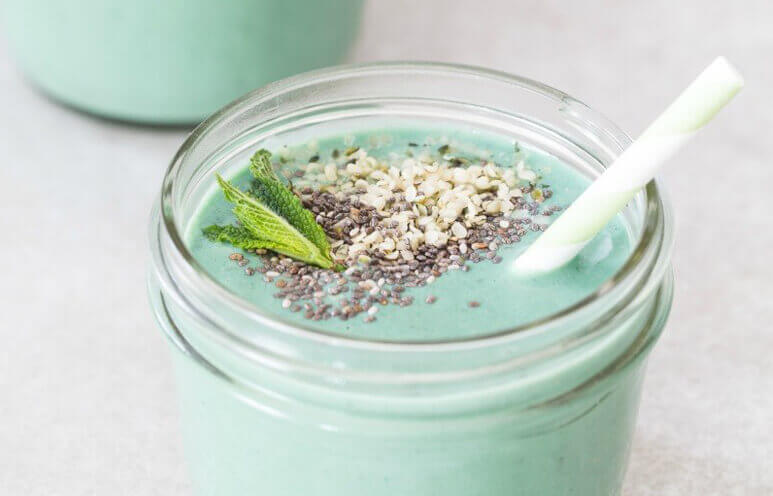
Smoothies make excellent snacks, because you can control the ingredients you put into them. This vegan smoothie is Mediterranean diet friendly, containing no animal products at all. Spirulina, a superfood type of algae, gives this smoothie a beautiful green color. Adding almond milk and hemp protein powder will increase satiety, while a frozen banana adds smoothness. Top your smoothie with chia seeds and mint for even more antioxidants.
Crackers and Healthy Tuna Salad
Ditch the mayonnaise-laden tuna salad that you remember from your childhood. Instead, mix some oil-packed tuna with a small squeeze of mustard, red wine vinegar, and scallions. Enjoy your healthy tuna salad atop whole-wheat crackers for a midday treat.
Nuts and Dried Fruit
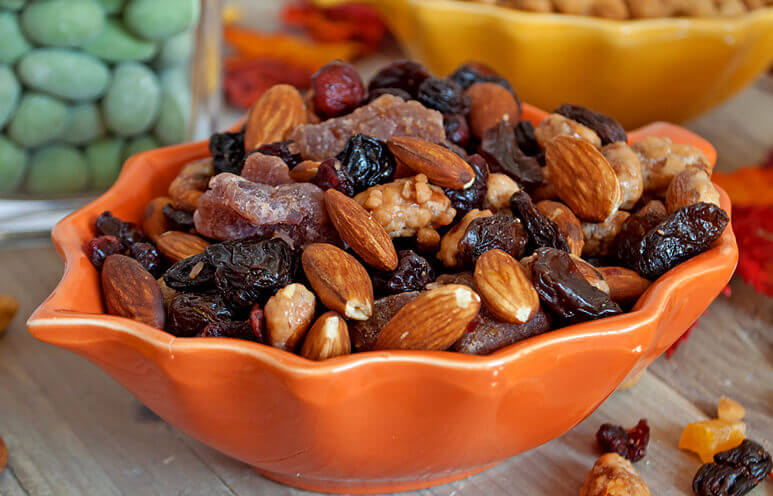
A handful of nuts contains a protein boost and is full of heart-healthy omega-3 fatty acids. Mix your favorite nuts with dried cherries or mixed berries for extra inflammation-fighting antioxidants.
Greek Yogurt with Fruit
Today, most Greek yogurt doesn’t actually hail from Greece. However, low-fat Greek yogurt is a protein-rich snack. Top a serving of yogurt with a handful of berries, some sunflower seeds, and a drizzle of honey.
Dates or Figs

Dates and figs grow well in the Mediterranean region, making them a key part of the Mediterranean diet. They also pack well into small portion sizes, making them a simple snack when you’re on the go.
Fruit Slices with Nut Butter
Apples or pears are great snacks when your sweet tooth hits. Add a protein punch by dipping fruit slices into your favorite nut butter. Almond butter or cashew butter are great options that contain heart-healthy fats. Learning to make your own almond butter by roasting and blending raw almonds allows you to harness the heart-healthy fats, protein, and fiber in this snack food.
Pumpkin Chia Seed Pudding
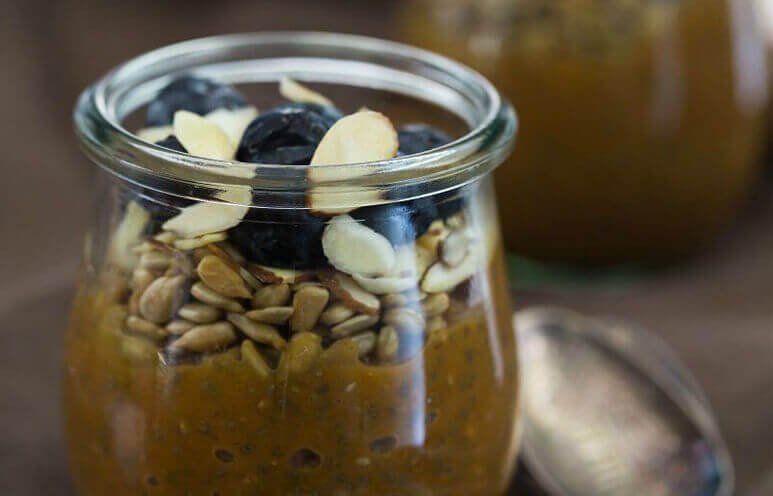
Chia seeds have almost magical properties, soaking up liquid to form a tapioca-like consistency that makes them ideally suited for puddings. Simply soak chia seeds overnight in pumpkin puree, maple syrup, and dairy or almond milk. The pudding can be placed in a jar or container that is easy to carry to work. Topping your pudding with almonds or sunflower seeds provides a nutty crunch that is the perfect counterpart to the creamy pudding. Find the full recipe here.
Tomato with Feta Cheese
Nothing beats the flavor of fresh tomatoes. When you’re feeling hungry, make a simple tomato salad. Just slice fresh tomatoes, drizzle with olive oil, and top with a few sprigs of basil. Fresh mozzarella cheese makes the perfect accompaniment to this salad, adding a bit of protein to your snack.
Pumpkin Seed Salsa

Using pumpkin seeds as a base for a salsa gives you a serving of this underappreciated superfood. Pumpkin seeds are rich in fiber, heart-healthy fats, iron, zinc, magnesium, and phosphorus. They also are bursting with antioxidants, helping your body fight off inflammation-causing free radicals. Dip your favorite tortilla chips into this unique and flavorful salsa when a snack craving strikes. To make this salsa, just follow this simple recipe from our Registered Dietitian.
Sun-dried Tomato and Goat Cheese Spread
Sun-dried tomatoes are bursting with rich flavor. Rich in vitamin A, vitamin C, lycopene, iron, and calcium, sun-dried tomatoes are often packed in olive oil, which gives them an extra heart-health boost. For a healthy Mediterranean diet snack, smear a thin layer of goat cheese on whole-wheat crackers and top with sun-dried tomatoes. A single basil leaf atop each cracker adds the perfect touch.
Homemade Granola Bars
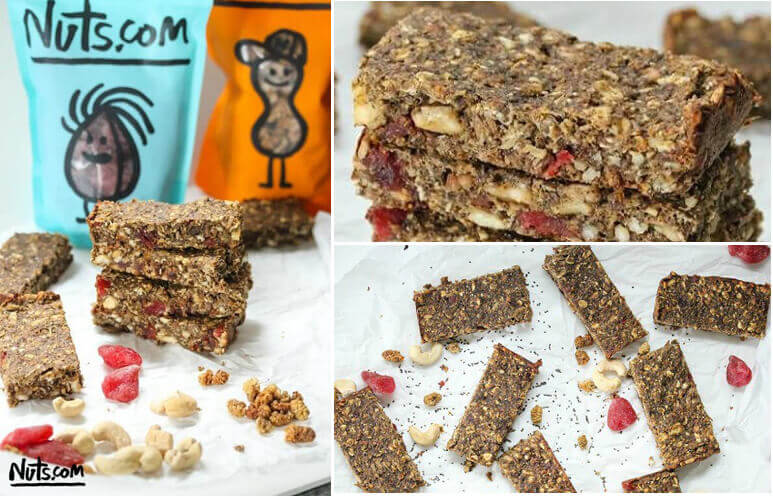
Supermarket granola bars are often laden with added sugars and preservatives. Making your own granola bars with this simple recipe supplies a much healthier choice. Flaxseed meal, hemp protein powder, chia seeds, and gluten-free rolled oats form the base of these granola bars. The addition of dried mulberries, raw cashews, dried strawberries, peanut butter, and bananas adds extra nutrients that set these bars far apart from their supermarket counterparts. Pack a granola bar in your bag before you leave the house to ensure you always have one handy when you are on the go.
Healthy Eating
- Healthy Highlights
- 5 Uses for Cacao Powder
- 5 Ways to Eat Farro
- 6 Best Gluten-Free Foods
- Alcohol and the Body
- Almond Flour Recipes
- Anti-Aging Superfoods
- Beat the Afternoon Slump
- Benefits of a Plant-Based Diet
- Benefits of Baobab
- Benefits of Cashews
- Benefits of Coconut Oil for Hair
- Benefits of Coconuts
- Benefits of Dates
- Benefits of Fenugreek
- Benefits of Garcinia Cambogia
- Benefits of Goji Berries
- Benefits of Kale Chips
- Benefits of Monk Fruit Sweetener
- Benefits of Peanuts
- Benefits of Pecans
- Benefits of Pistachios
- Benefits of Pumpkin Seeds
- Benefits of Spelt Flour
- Benefits of Steel Cut Oats
- Benefits of Sunflower Seeds
- Benefits of Tiger Nuts
- Benefits of Turmeric
- Benefits of Walnuts
- Benefits of Wheatgrass
- Best Food Fads
- Cacao vs Cocoa
- Caffeine-Free Energy Foods
- Chocolate That's Good for You
- Diet vs. Exercise
- Fat Burning Foods
- Food Myths Debunked
- Foods for Bone Density
- Foods for Colon Health
- Foods for Healthy Hair
- Foods for Healthy Skin
- Foods to Help Sleep
- Foods to Reduce Stress
- Green Tea Benefits
- Healthy Baking Flours
- Heart Healthy Habits
- High Protein Health Risks
- How to Boost Your Metabolism
- How to Lose Weight While Aging
- How to Throw a Vegan BBQ
- Kaniwa vs Quinoa
- Little Health Foods
- Low-Carb: Fad or Friend?
- Making Healthier Desserts
- Mediterranean Diet Meal Plan
- Natural Beauty Products
- Nuts for Weight Loss
- Preparing Vegan Meals
- Preventing Muscle Degeneration
- Rare Superfoods
- Reduce Sugar Intake
- Save Time By Going Vegan
- Smarter Snack Swaps
- Smoothie Ingredients
- Soy Protein vs Whey Protein
- Starting a Plant-Based Diet
- Steel Cut vs Rolled Oats
- Sugar Substitutes
- Vegan Proteins
- Vegan Substitutions for Fall Recipes
- Why Go Vegan
- Healthy Meals
- Healthy Recipes
- Sports Nutrition
- Nutrition and Special Diets
- 21 Day Fix
- 5 Popular Diet Similarities
- Alkaline Diet
- Anti-Inflammatory Diet
- Calorie Counting
- Carb Cycling Diet
- Celiac Disease
- Cholesterol
- Clean Eating
- Crohn's Disease
- DASH Diet
- Detox Diet
- Diabetes
- Diabetes Diet
- Diet Pill Dangers
- Fat Burning Foods
- Gluten-free Diet
- Glycemic Index
- Heart Health
- High Blood Pressure Diet
- High Fiber Foods
- How to Eat Healthy
- How to Lower Blood Pressure
- Hypertension
- IBS Diet
- Ketogenic Diet
- Liquid Diet
- Low GI Foods
- Low-Carb Diet and Foods
- Low-Fat High-Carb Diet
- Mediterranean Diet
- Mediterranean Diet Foods
- Military Diet
- Nutrition Labels Explained
- Paleo Diet
- Raw Food Diet
- Superfoods
- Sustainable Weight Loss
- Thrive Diet
- Vegan Diet
- Vegetarian Diet
- Weight Loss Shakes
- Whole30
- Vitamins, Minerals & Nutrients

